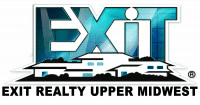Not sure if Pillar To Post is right for you?
Talk to a Franchise Advisor who can match you with your perfect franchise based on your goals, experience, and investment range.
Talk to an Expert
Pillar To Post
How much does Pillar To Post cost?
Initial Investment Range
$102,690 to $134,290
Franchise Fee
$60,500
Pillar To Post, Inc. offers executive model franchises within a specified territory for the operation of a home inspection business offering unique residential inspection services.
Enjoy our partial free risk analysis below
Unlock the full risk analysis to access 9 more categories covering 100+ risks.
Pillar To Post March 25, 2025 FDD Risk Analysis
Free FDD Library AI Analysis Date: July 16, 2025
DISCLAIMER: Not Legal Advice - For Informational Purposes Only. Consult With Qualified Franchise Professionals.
Franchisor Stability Risks
Start HereDisclosure of Franchisor's Financial Instability
Low Risk
Explanation
This risk was not identified in the FDD package. The audited financial statements for the parent company of Pillar To Post, Inc. (Pillar To Post), FS Brands, Inc., show consistent revenue growth and profitability with no indicators of financial instability such as a going concern note. A franchisor's financial health is critical as it underpins their ability to provide support, invest in the brand, and fulfill their obligations over the long term.
Potential Mitigations
- An experienced franchise accountant should review the franchisor's financial statements, including all footnotes and the auditor's report, for a comprehensive assessment.
- It is wise to have your business advisor analyze financial trends over the past three years to gauge the franchisor's stability and growth trajectory.
- Your franchise attorney can help you understand any financial performance guarantees provided by a parent company and their implications.
High Franchisee Turnover
High Risk
Explanation
Item 20 data reveals a consistently high rate of franchisee exits. In 2024, 43 of 407 non-exclusive franchises (10.6%) were terminated or not renewed. In 2023, the rate was 11.5%. Such a significant and sustained level of turnover could indicate potential franchisee dissatisfaction, profitability challenges, or other systemic issues within the franchise model. This high churn rate is a significant indicator of risk that warrants thorough investigation before you invest.
Potential Mitigations
- Contacting a significant number of former franchisees listed in Item 20 and Exhibit B is critical to understanding why they left the system.
- A discussion with your franchise attorney can help you formulate key questions for both current and former franchisees regarding their experiences.
- Presenting this turnover data to your business advisor can help assess the potential risks to your own business plan.
Rapid System Growth
Low Risk
Explanation
This risk was not identified in the FDD package. The data in Item 20 shows a net decrease in the number of franchised outlets over the past three years, indicating the system is contracting rather than growing rapidly. Rapid growth can sometimes strain a franchisor's ability to provide adequate support to all franchisees, so its absence here is a neutral factor.
Potential Mitigations
- Discuss the system's current growth strategy and historical trends with your business advisor to understand its market position.
- A review of the franchisor's support infrastructure with your attorney can help determine if it is appropriately scaled for the current system size.
- Your accountant can analyze the franchisor's financial statements to see how system size trends correlate with financial performance.
New/Unproven Franchise System
Low Risk
Explanation
This risk was not identified. Pillar To Post has been offering franchises since 1995, as stated in Item 1. This indicates a long-established and mature franchise system, not a new or unproven one. A long operating history generally suggests that the business model and support systems are well-developed.
Potential Mitigations
- It is still beneficial to have your business advisor assess the franchisor's historical performance and its adaptation to market changes over the years.
- Posing questions to long-term franchisees about the evolution of the system can provide valuable insights.
- Your attorney can review how the franchise agreement has changed over time by comparing it with older FDDs if available.
Possible Fad Business
Low Risk
Explanation
This risk was not identified. The franchise offers residential home inspection services, a long-established industry tied to the real estate market. This is not a business model based on a short-term trend or fad. The stability of the underlying industry can be a positive factor for long-term business viability.
Potential Mitigations
- A business advisor can help you research the long-term outlook and competitive landscape for the home inspection industry in your local market.
- Engage a real estate professional to understand local market trends that could impact demand for home inspection services.
- Your accountant can assist in developing financial projections that account for the cyclical nature of the real estate market.
Inexperienced Management
Low Risk
Explanation
This risk was not identified. Item 2 of the FDD details the business experience of the management team, showing that key executives have many years of experience with Pillar To Post and within the franchising industry. Experienced leadership is a crucial factor for a stable and well-run franchise system.
Potential Mitigations
- It remains prudent to discuss the management team's reputation and track record with current and former franchisees.
- Researching the professional backgrounds of key executives online can provide additional context for your business advisor.
- Your franchise attorney can help you assess whether the management team's experience aligns with the company's strategic direction.
Private Equity Ownership
Low Risk
Explanation
Pillar To Post is part of a larger corporate structure ultimately owned by FirstService Corporation, a publicly traded company. While this can provide stability and resources, it also means that major strategic decisions may be driven by the interests of public shareholders, which might not always align perfectly with the long-term profitability of individual franchisees. This structure could influence policies on fees, support, and system direction.
Potential Mitigations
- Your business advisor should research the parent company's history and its management of other franchise brands.
- It is important to ask current franchisees about any changes in operations or support that have occurred under the current ownership structure.
- Consulting your attorney will help you understand the implications of the franchisor being owned by a publicly traded entity.
Non-Disclosure of Parent Company
Low Risk
Explanation
This risk was not identified. The FDD clearly discloses the parent company, FS Brands, Inc., and the ultimate parent, FirstService Corporation, in Item 1. Furthermore, the FDD provides the required financial statements for the parent, FS Brands, Inc., and a Guarantee of Performance. The disclosure appears to be transparent.
Potential Mitigations
- An attorney should always confirm that the disclosed entity is the one you are contracting with and that any guarantees are properly documented.
- Your accountant should verify that the provided financial statements belong to the correct corporate entity and are properly audited.
- Asking the franchisor to provide an organizational chart can help your business advisor clarify complex corporate structures.
Predecessor History Issues
Low Risk
Explanation
This risk was not identified in the FDD package. Item 1 explicitly states that there is no predecessor to Pillar To Post. This means the historical information provided in the FDD pertains directly to the current franchisor, which simplifies due diligence.
Potential Mitigations
- Confirming the franchisor's corporate history with your attorney is still a sound due diligence step.
- Your business advisor can research the brand's history to ensure no other entities operated the system under a different name.
- Always ask current long-term franchisees about the history of the company to verify the information in the FDD.
Pattern of Litigation
Low Risk
Explanation
This risk was not identified. Item 3 discloses only one prior arbitration from 2017 involving a master franchisee, which was settled. A single, settled case from several years ago does not constitute a pattern of litigation against the franchisor. A lack of significant litigation, especially claims of fraud, can be a positive indicator.
Potential Mitigations
- It's still advisable to have your attorney review the details of any disclosed litigation, no matter how old.
- Performing a public records search for litigation involving the franchisor can be a good due diligence step for your business advisor.
- Asking current franchisees if they are aware of any widespread disputes can provide insights beyond the FDD.
Disclosure & Representation Risks
Example Risk: Franchisee Financial Obligations
Blue Risk
Explanation
This risk involves the financial obligations that a franchisee must meet, including initial fees, ongoing royalties, and other required payments. Understanding these obligations is crucial for long-term success.
Potential Mitigations
- Carefully review the Franchise Disclosure Document (FDD) and consult with a franchise attorney to fully understand all financial commitments before signing.
- Conduct regular risk assessments
- Implement monitoring and reporting systems
Unlock Full Risk Analysis
Purchase the complete risk review to see all 102 risks across all 10 categories.
Financial & Fee Risks
Example Risk: Franchisee Financial Obligations
Blue Risk
Explanation
This risk involves the financial obligations that a franchisee must meet, including initial fees, ongoing royalties, and other required payments. Understanding these obligations is crucial for long-term success.
Potential Mitigations
- Carefully review the Franchise Disclosure Document (FDD) and consult with a franchise attorney to fully understand all financial commitments before signing.
- Conduct regular risk assessments
- Implement monitoring and reporting systems
Unlock Full Risk Analysis
Purchase the complete risk review to see all 102 risks across all 10 categories.
Legal & Contract Risks
Example Risk: Franchisee Financial Obligations
Blue Risk
Explanation
This risk involves the financial obligations that a franchisee must meet, including initial fees, ongoing royalties, and other required payments. Understanding these obligations is crucial for long-term success.
Potential Mitigations
- Carefully review the Franchise Disclosure Document (FDD) and consult with a franchise attorney to fully understand all financial commitments before signing.
- Conduct regular risk assessments
- Implement monitoring and reporting systems
Unlock Full Risk Analysis
Purchase the complete risk review to see all 102 risks across all 10 categories.
Territory & Competition Risks
Example Risk: Franchisee Financial Obligations
Blue Risk
Explanation
This risk involves the financial obligations that a franchisee must meet, including initial fees, ongoing royalties, and other required payments. Understanding these obligations is crucial for long-term success.
Potential Mitigations
- Carefully review the Franchise Disclosure Document (FDD) and consult with a franchise attorney to fully understand all financial commitments before signing.
- Conduct regular risk assessments
- Implement monitoring and reporting systems
Unlock Full Risk Analysis
Purchase the complete risk review to see all 102 risks across all 10 categories.
Regulatory & Compliance Risks
Example Risk: Franchisee Financial Obligations
Blue Risk
Explanation
This risk involves the financial obligations that a franchisee must meet, including initial fees, ongoing royalties, and other required payments. Understanding these obligations is crucial for long-term success.
Potential Mitigations
- Carefully review the Franchise Disclosure Document (FDD) and consult with a franchise attorney to fully understand all financial commitments before signing.
- Conduct regular risk assessments
- Implement monitoring and reporting systems
Unlock Full Risk Analysis
Purchase the complete risk review to see all 102 risks across all 10 categories.
Franchisor Support Risks
Example Risk: Franchisee Financial Obligations
Blue Risk
Explanation
This risk involves the financial obligations that a franchisee must meet, including initial fees, ongoing royalties, and other required payments. Understanding these obligations is crucial for long-term success.
Potential Mitigations
- Carefully review the Franchise Disclosure Document (FDD) and consult with a franchise attorney to fully understand all financial commitments before signing.
- Conduct regular risk assessments
- Implement monitoring and reporting systems
Unlock Full Risk Analysis
Purchase the complete risk review to see all 102 risks across all 10 categories.
Operational Control Risks
Example Risk: Franchisee Financial Obligations
Blue Risk
Explanation
This risk involves the financial obligations that a franchisee must meet, including initial fees, ongoing royalties, and other required payments. Understanding these obligations is crucial for long-term success.
Potential Mitigations
- Carefully review the Franchise Disclosure Document (FDD) and consult with a franchise attorney to fully understand all financial commitments before signing.
- Conduct regular risk assessments
- Implement monitoring and reporting systems
Unlock Full Risk Analysis
Purchase the complete risk review to see all 102 risks across all 10 categories.
Term & Exit Risks
Example Risk: Franchisee Financial Obligations
Blue Risk
Explanation
This risk involves the financial obligations that a franchisee must meet, including initial fees, ongoing royalties, and other required payments. Understanding these obligations is crucial for long-term success.
Potential Mitigations
- Carefully review the Franchise Disclosure Document (FDD) and consult with a franchise attorney to fully understand all financial commitments before signing.
- Conduct regular risk assessments
- Implement monitoring and reporting systems
Unlock Full Risk Analysis
Purchase the complete risk review to see all 102 risks across all 10 categories.
Miscellaneous Risks
Example Risk: Franchisee Financial Obligations
Blue Risk
Explanation
This risk involves the financial obligations that a franchisee must meet, including initial fees, ongoing royalties, and other required payments. Understanding these obligations is crucial for long-term success.
Potential Mitigations
- Carefully review the Franchise Disclosure Document (FDD) and consult with a franchise attorney to fully understand all financial commitments before signing.
- Conduct regular risk assessments
- Implement monitoring and reporting systems
Unlock Full Risk Analysis
Purchase the complete risk review to see all 102 risks across all 10 categories.










